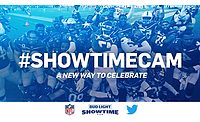Seeing The Light
A good lighting plan can save at least 20 percent on energy costs, but re-evaluating lighting in a facility can do even more, says Daniel Gould, president of Synergy, Westborough, Mass.
“In the past five years there’s been a
whole revolution in how to light manufacturing and warehouses,” Gould
says. “Instead of going in and just thinking about the energy savings
as if it’s a school or office building, we look at how to increase
productivity, safety and morale, really brighten up task areas — and
at the same time save some money.”
Gould says the improvements are the result of a
combination of more efficient fluorescent lighting and more appropriate
task lighting. Compared with metal halide lighting, improvements in
fluorescent lighting and fixtures have resulted in nearly 50 percent
savings in wattage per fixture, with an equivalent light output.
It also is cost efficient to pay attention to where
lights are located in a facility, putting motion sensors in areas that do
not require constant lighting and making sure lighting is not covered by
racking systems or conveyors, he says.
“Nobody really pays attention to the lights
after they’re put in,” Gould says. “We have a term for it
called BOBA, or Big Open Box Approach — that’s how a typical
engineering firm will lay out the fixtures on a specific spacing. In some
areas it’s just dead storage, in others it’s a highly specific
task area, and in some there are forklift trucks driving around. It’s
taking a hard look at the existing facility and saying ‘Where do you
need the light and what’s the appropriate light?’
“Now people are saying, ‘Wow, I can see
my work, I can see what’s going on. Once it’s all explained,
customers see that it’s common sense.”


